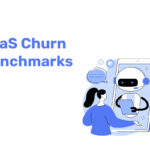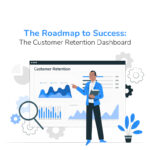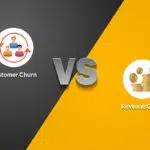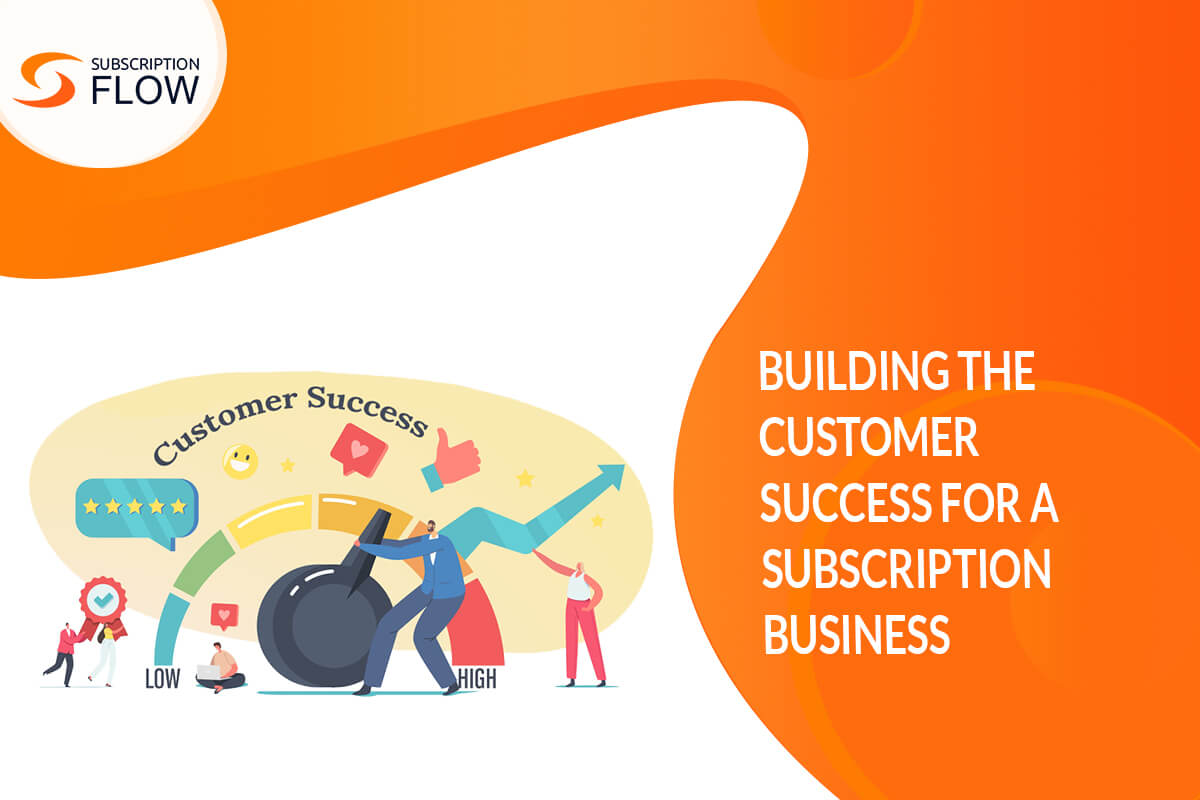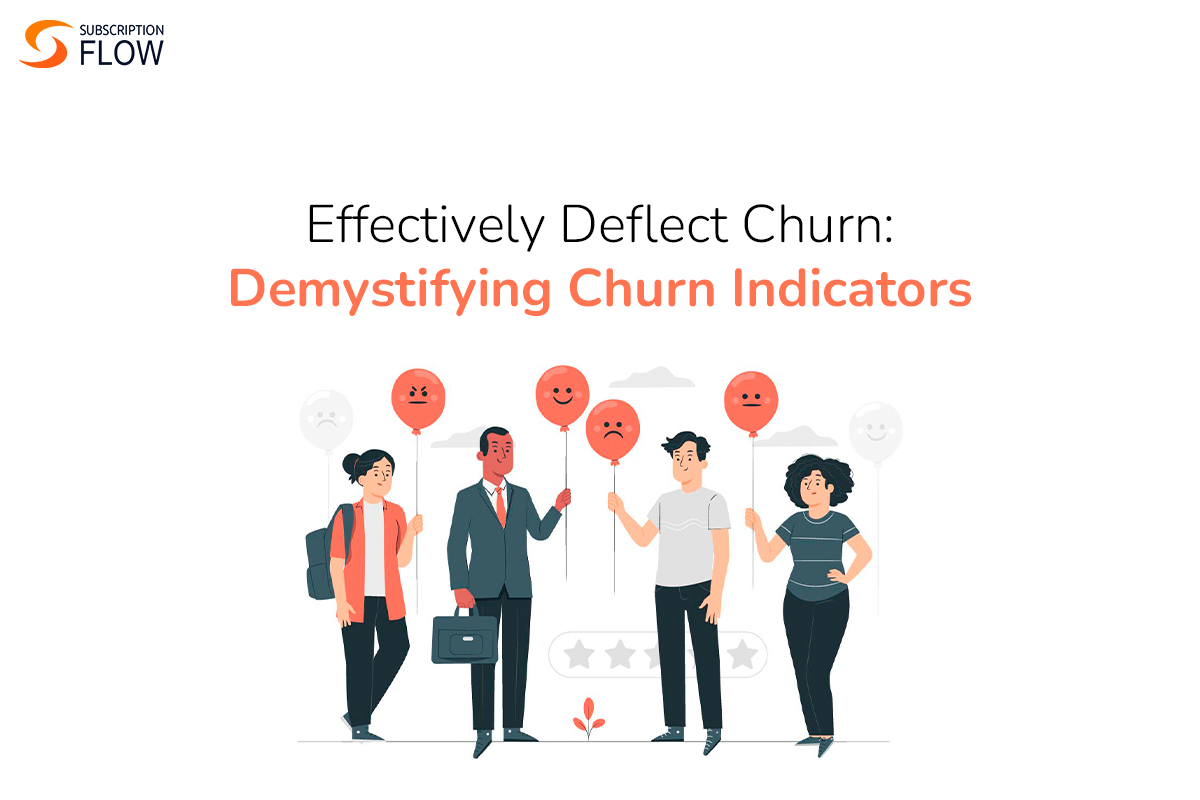
Effectively Deflect Churn: Demystifying Churn Indicators
Growth is hard.
Specially in today’s fiercely competitive subscription landscape.
With readily available information, a growing list of competitors, and the importance of customer referrals and word-of-mouth marketing, the cost of acquiring customers is on the rise. Additionally, the challenge of retaining customers is becoming increasingly difficult due to rising concerns of subscription fatigue.
Customer churn, or the loss of customers over a specific period, significantly impedes subscription businesses’ growth and scalability potential. This is why, proactively identifying churn indicators, which are signals or patterns that suggest a customer is at risk of leaving, is crucial for developing effective customer retention strategies.
In this blog, we will explore some universal customer churn indicators and discuss their importance in reducing customer churn.
What are Some Universal Churn Indicators?
Churn indicators refer to metrics or behavioral patterns that are telltale signs of customer attrition. They help businesses identify customers who are likely to churn, thus enabling them to take actionable steps to prevent customer attrition and improve customer retention.
Indicators of churn can greatly vary across different industries and businesses, but there are some common customer churn indicators that tend to be universally applicable. Let’s learn what those are.
1. Declining Customer Usage
Customers who gradually reduce their product usage or engagement levels may be signaling a lack of interest or dissatisfaction in your offering. Monitoring metrics such as decreasing logins, decreasing purchase frequency, or declining activity can help flag a potential risk of churn.
2. Repeat Customer Support Interactions
Frequent or escalating interactions with customer support teams may indicate unresolved issues or frustrations. This friction is directly indicating low levels of customer satisfaction. High volumes of support tickets, complaints, or negative feedback can be strong indicators of churn.
3. Changes in Account Information
Significant changes in customer account details, such as updated contact information or a switch in payment methods, can indicate a potential churn risk. These changes might suggest a lack of commitment or a need to explore other alternatives.
4. Interaction with Competitors
Customers who start researching or interacting with competitors, such as comparing prices, and features, or seeking recommendations, are likely to consider converting. Monitoring online activities, social media interactions or website analytics can provide insights into competitive interactions.
5. Feature Attrition
Feature erosion serves as a significant, if not the most significant, indicator of customer attrition. When customers inform companies about their intention to reduce their utilization of specific features or services, it should immediately raise concerns. Your company must comprehend your client’s pain points to present compelling justifications for product adoption.
6. Absence of Advocates
A successful sale often involves multiple stakeholders, including a key advocate. An advocate is an individual or, ideally, a group of individuals who advocate for the adoption of your company’s products or services. This advocate should continue to promote buy-in throughout the customer lifecycle.
However, many companies frequently fall into a perilous trap by relying solely on a single advocate to drive adoption. But what happens if that advocate departs? Depending solely on one advocate may yield a sales victory, but it does little to nurture long-term customer relationships.
7. Product Utilization
Customers who do not fully utilize or adopt the product features and functionalities may be less likely to see the value in the offering. Tracking usage patterns and feature adoption rates can help identify customers at risk.
The good news is that this category of revenue leakage is easier to plug by making sure your customers are incentivized to explore and get to know your product functionalities especially those that may furnish solutions to their specific pain points. Trial usage tracking can be useful in this regard.
8. Negative Customer Feedback (Negative NPS)
Collecting and analyzing customer sentiment through customer feedback, reviews, or surveys can uncover underlying frustrations or dissatisfaction. Negative sentiment furnishes a strong churn signal.
How to Utilize Churn Indicators for Customer Retention?
Once indicators of churn have been identified, businesses can take proactive measures to mitigate customer churn. Here are some strategies to consider:
1. Personalized Outreach
Reach out to customers who display churn signals with personalized messages or offers. Show that you value their business and are willing to address any concerns or issues they may have. SubscriptionFlow’s RetentionFlow application allows you to automate playbooks against triggers that indicate poor customer health. So, if your customer’s login activity declines and falls below a threshold you can offer them an incentive to start using your platform again.
2. Targeted Incentives
Offer targeted incentives or discounts to encourage customers to stay, especially if they exhibit signs of switching to a competitor. These incentives can be tailored to address specific concerns or pain points.
3. Enhance Customer Support
Improve customer support processes and response times to address any concerns or issues promptly. Make it easy for customers to get the assistance they need and ensure their questions are resolved satisfactorily. After all customer success is now considered the third engine of growth.
4. Enhance Onboarding and User Experience
Simplify onboarding processes and improve the overall user experience to increase customer satisfaction and engagement. Invest in user training and provide proactive guidance to help customers realize the full value of your product or service. Empowering customers through self-service portals and having a robust knowledge base can really boost user experience. It is also vital to implement product-led growth (PLG) for long-term retention and customer satisfaction.
Read More: Empowering the Customer – Self-Service SaaS Solutions
5. Collect and Analyze Feedback
Continuously collect and analyze customer feedback to identify areas for improvement. Actively listen to your customers’ suggestions and incorporate their input into product development and service enhancements. The NPS score is important in this regard.
Read More: What is Net Promoter Score, How to Calculate NPS, and Why is it Important in SaaS?
Final Thoughts
Identifying customer churn indicators is essential for businesses looking to reduce customer churn and improve customer retention. Monitoring key metrics and behavioral patterns, allows companies to proactively address potential issues, enhance customer experiences, and implement targeted retention strategies.
Remember that indicators of churn may vary across industries and businesses, so it’s crucial to analyze your specific context and use data-driven insights to effectively reduce customer churn. Prioritize customer satisfaction and stay vigilant to churn indicators, as this will allow your business to foster long-term customer relationships and drive sustainable growth.






